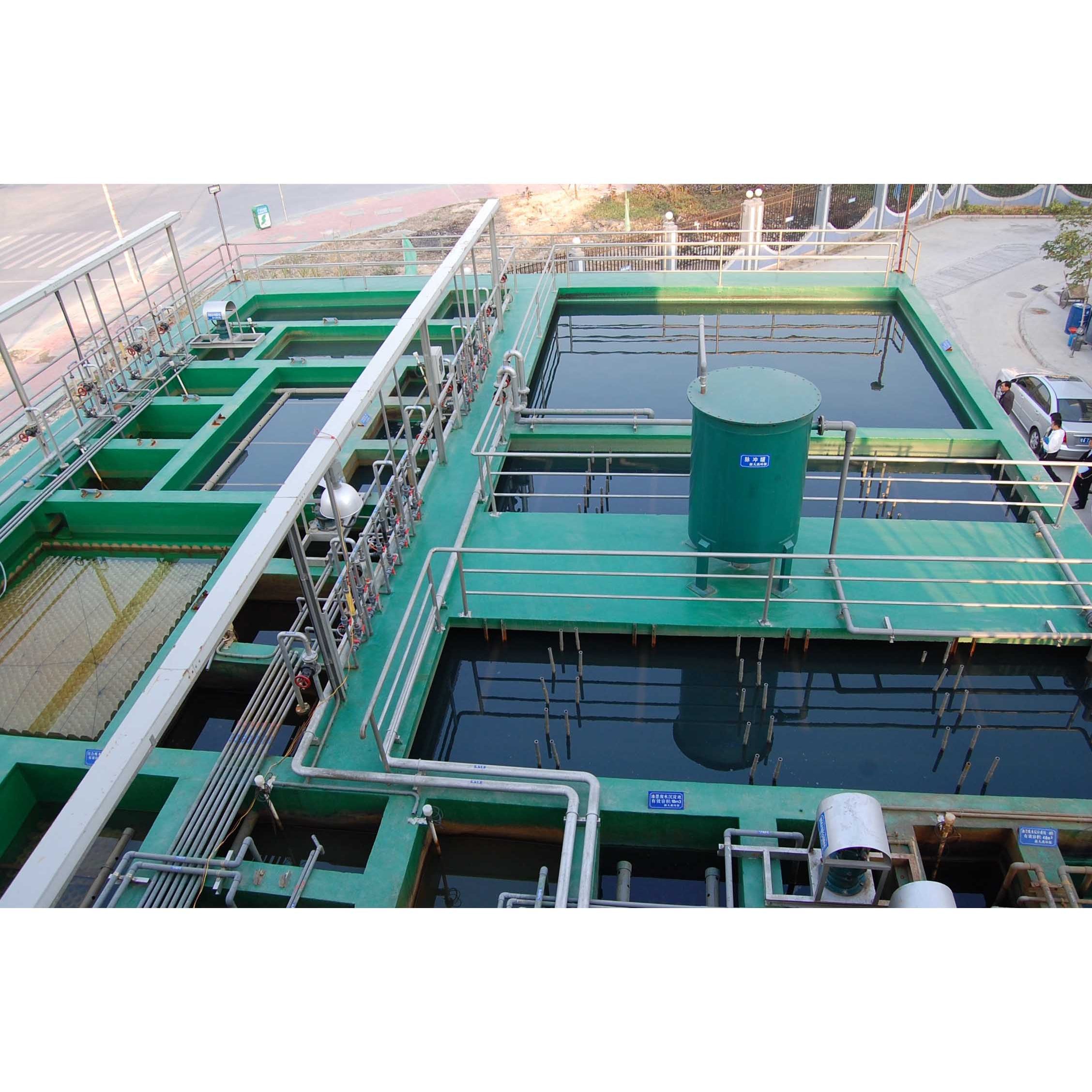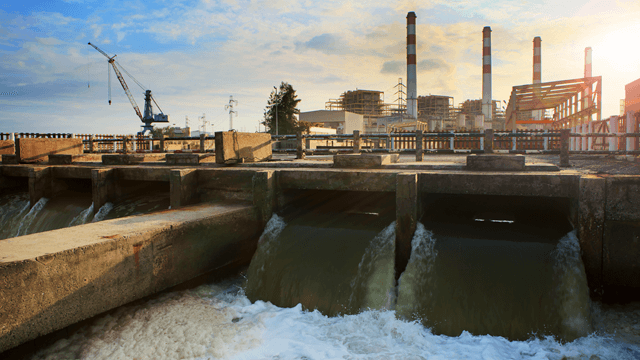Industrial Waste Water Treatment-- Comprehensive Equipments for Wastewater Disposal
Industrial Waste Water Treatment-- Comprehensive Equipments for Wastewater Disposal
Blog Article
Secret Methods in Industrial Waste Water Treatment Procedures
The therapy of industrial wastewater is a crucial aspect of ecological administration, including a variety of techniques made to alleviate the impact of pollutants. From the fundamental physical approaches that separate solids to the innovative chemical and biological procedures that target particular toxins, each method plays a vital function in achieving water high quality criteria. Furthermore, advancements in innovations such as membrane layer filtering and progressed oxidation processes use cutting-edge services for boosting treatment effectiveness. Comprehending exactly how these approaches interconnect and their implications for sustainability raises crucial inquiries about the future of wastewater administration in sector.
Physical Treatment Techniques
Exactly how successfully can physical therapy techniques attend to the intricacies of industrial wastewater? Physical treatment methods play a critical function in the preliminary stages of wastewater management, focusing largely on the elimination of solids and huge particulates. Methods such as sedimentation, flotation, and filtration are necessary for minimizing the concentration of suspended solids, therefore boosting the effectiveness of subsequent therapy procedures.
Sedimentation involves the gravitational settling of solids, allowing for the separation of larger materials from the wastewater. This technique is specifically efficient in making clear water prior to chemical or organic therapies. Purification, on the other hand, utilizes numerous media to catch particulate issue, making sure that smaller impurities are eliminated. This technique can be customized to accommodate various kinds of commercial effluents, creating more clear effluent streams.
In addition, flotation approaches, which utilize air bubbles to raise suspended solids to the surface for elimination, are efficient in dealing with wastewater with high concentrations of fats, oils, and oils. Overall, physical treatment approaches serve as an essential very first step in the extensive monitoring of commercial wastewater, guaranteeing that the lots on subsequent treatment phases is decreased and enhancing general therapy efficacy.
Chemical Treatment Methods
While physical treatment methods lay the foundation for efficient wastewater management, chemical therapy techniques are essential for attending to the much more complicated impurities often discovered in commercial effluents. These approaches make use of numerous chemical representatives to speed up, counteract, or oxidize damaging compounds, making certain a much more comprehensive removal of toxins.
One common strategy is coagulation and flocculation, where chemical coagulants such as aluminum sulfate or ferric chloride are included in advertise the gathering of put on hold particles. This procedure enhances solid-liquid separation, lowering turbidity and improving water top quality. Additionally, neutralization processes are employed to change the pH of wastewater, making use of acids or bases to reduce the effects of acidic or alkaline streams, specifically.
Oxidation-reduction responses play a vital duty in degrading organic impurities and virus. Chemical oxidants like ozone, chlorine, or hydrogen peroxide are made use of to break down complex organic compounds, making them much less harmful or much more naturally degradable. Progressed oxidation procedures (AOPs) incorporate several oxidation techniques to enhance pollutant removal efficiency.
Biological Therapy Procedures
The performance of wastewater therapy is significantly boosted by biological treatment processes, which harness the natural metabolic tasks of bacteria to decay natural issue and get rid of toxins. Industrial Waste Water Treatment. These procedures mostly involve anaerobic and cardiovascular food digestion, each customized for certain sorts of wastewater
Cardiovascular treatment processes utilize oxygen to sustain microbial development, advertising the malfunction of natural toxins right into carbon dioxide and water. Common methods include activated sludge systems, where aeration containers assist in the mixing of wastewater with bacteria, and dripping filters, which encourage biofilm development on media surface areas.
On the other hand, anaerobic therapy procedures occur in the lack of oxygen, using anaerobic bacteria to decay natural issue, resulting in biogas manufacturing, a sustainable energy source. Anaerobic digesters are often used in industrial setups for this objective, properly minimizing the volume of sludge while creating important biogas.
The selection of an organic treatment approach depends upon wastewater characteristics, therapy objectives, and regulatory criteria. The integration of organic processes in wastewater therapy not only boosts contaminant elimination effectiveness his comment is here but likewise advertises sustainability by minimizing chemical usage and sustaining resource healing.
Advanced Oxidation Processes

Typical AOP techniques include Fenton's reagent, photocatalysis, and ozonation. Fenton's reagent, a mix of hydrogen peroxide and ferrous iron, militarizes the formation of hydroxyl radicals, making it efficient for dealing with wastewater having phenolic compounds and other recalcitrant materials.
AOPs supply several advantages, including lowered sludge manufacturing and the ability to treat wastewater with high concentrations of natural toxins. Nonetheless, the implementation of AOPs calls for cautious factor to consider of operational criteria and cost-effectiveness, guaranteeing that these sophisticated strategies are suitably incorporated right into existing wastewater treatment systems.
Membrane Layer Purification Technologies

Microfiltration is efficient for eliminating put on hold bacteria and solids, while ultrafiltration targets smaller natural particles and infections. Nanofiltration links the gap between ultrafiltration and reverse osmosis, efficiently eliminating natural compounds and divalent ions. Reverse osmosis provides the highest degree of purification, utilized mostly for desalination and getting rid of mono-valent ions.
Membrane layer modern technologies offer numerous advantages, including low energy consumption compared to traditional treatment methods, modular design for scalability, and the possibility for water recovery and reuse. Nevertheless, difficulties such as membrane layer fouling and the demand for normal upkeep need to be resolved to make sure system efficiency. Generally, membrane filtration technologies represent an essential part of modern industrial wastewater treatment strategies, advertising sustainability and source conservation in check this site out water management.
Verdict
In verdict, commercial wastewater treatment uses a varied range of techniques, consisting of physical, chemical, organic, and advanced approaches. Each technique plays an important role in properly attending to various impurities, improving water quality, and advertising resource sustainability. The integration of these strategies fosters a comprehensive therapy technique, ensuring that commercial effluents meet governing requirements while minimizing ecological impact. Proceeded developments in these techniques will better enhance the performance and efficiency of wastewater therapy processes in commercial settings.
The treatment of industrial wastewater is a crucial element of ecological management, including an array of strategies developed to alleviate the influence of pollutants.Exactly how properly can physical treatment methods attend to the intricacies of commercial wastewater?Advanced oxidation processes (AOPs) represent an innovative strategy in commercial wastewater therapy, designed to efficiently break down natural toxins that are often resistant to traditional treatment techniques (Industrial Waste Water Treatment).In final thought, commercial wastewater therapy uses a varied more information variety of strategies, consisting of physical, chemical, organic, and progressed approaches. Proceeded innovations in these techniques will certainly better boost the performance and performance of wastewater therapy procedures in commercial settings
Report this page